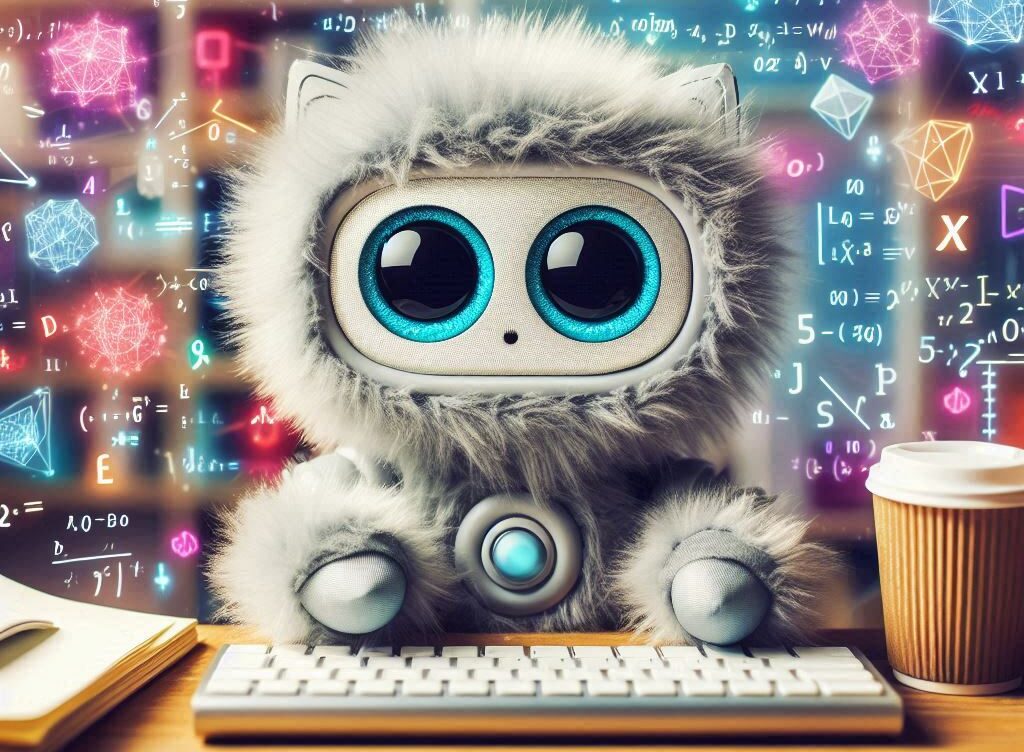Artificial Intelligence (AI) is one of the branches in computer science that has made remarkable progress in recent years. This field empowers computers to think independently, much like humans, enabling them to make decisions.
AI has also had a positive impact on our daily lives. For instance, social media platforms use AI to identify your interests and recommend things accordingly. Additionally, AI is employed in systems used in cars or the features added to smartphones each year. Furthermore, fictional characters in games or systems that quickly find the best answers to our questions are all part of this vast field.
In the past, when people heard the term ‘artificial intelligence’, they often imagined humanoid robots from movies and games. However, those robots are just a subset of the robotics field (another branch of AI). Nowadays, when we mention AI, we recognize its broader scope and the significant advancements it has made over the years.
History of Artificial Intelligence (AI)
AI has existed even in ancient times. For example, there were inventions like mechanical pigeons. However, this field formally and scientifically took shape in the mid-20th century.
In those years, English logician Alan Turing (a pioneer in AI) introduced the concept of this field. His idea was to create machines that could mimic human reasoning and problem-solving skills. Following that, in the 1940s, inventors were working on building electronic brains.
The first AI system used in games was in the game ‘Nim,’ created in 1951 and released in 1952. In 1951, Christopher Strachey wrote a checkers game program for the ‘Ferranti Mark 1’ machine at the University of Manchester. Dieter Prinz also developed a chess program. These two games were among the earliest computer games ever written. The checkers program, developed by Arthur Samuels, continued to improve until it eventually defeated an amateur player. Work on these two games (chess and checkers) culminated in the famous victory of IBM’s Deep Blue computer over world chess champion Garry Kasparov. Nowadays, AI in games has advanced significantly, allowing non-playable characters (NPCs) to exhibit more complex behaviors and intelligent reactions, making their defeat more challenging. For more information visit “The Evolution of Artificial Intelligence“.
Branches of Artificial Intelligence
The main branches of artificial intelligence are as follows) by clicking on the links below, you can have a more comprehensive study about each one) :
Machine Learning
Machine learning, in brief, refers to behaviors that AI learns from and utilizes in the future. In other words, it involves data collected by AI without the need for prior programming, adapting to events.
Machine learning encompasses three main approaches:
- Supervised Learning: In this method, AI is trained using labeled data.
- Unsupervised Learning: Here, AI learns without labeled data and seeks hidden patterns and structures within the acquired data.
- Reinforcement Learning: In this approach, the model learns through rewards and penalties, figuring out how to act optimally to receive greater rewards.
Neural Network
Neural networks refer to novel computational systems and methods used for machine learning, knowledge representation, and applying acquired knowledge (data) to predict future responses in complex systems. The fundamental idea behind these systems is inspired by the functioning of biological neural systems. These networks consist of numerous interconnected processing elements called neurons, which collaborate harmoniously to address a problem or event. Ultimately, information is transmitted through synapses (electromagnetic connections).
Learning in these systems involves adjusting the synaptic weights using examples, ensuring that the system produces accurate responses when presented with new inputs. In other words, artificial neural networks learn by capturing relationships among various datasets through training and then apply that knowledge to similar materials.
Robotics
Robotics is the interdisciplinary study and practice of the design, construction, operation, and use of robots. Within mechanical engineering, robotics is the design and construction of the physical structures of robots, while in computer science, robotics focuses on robotic automation algorithms. Other disciplines contributing to robotics include electrical, control, software, information, electronic, telecommunication, computer, mechatronic, and materials engineering. The goal of most robotics is to design machines that can help and assist humans. Many robots are built to do jobs that are hazardous to people, such as finding survivors in unstable ruins, and exploring space, mines, and shipwrecks. Others replace people in jobs that are boring, repetitive, or unpleasant, such as cleaning, monitoring, transporting, and assembling. Today, robotics is a rapidly growing field, as technological advances continue; researching, designing, and building new robots serve various practical purposes.
Expert System
This system replaces human skills. They are designed to solve complex and challenging problems. The basis of their work is knowledge, logical thinking, and adherence to norms. Expert systems, by simulating the thought process and decision-making of humans, are capable of providing suitable and efficient solutions in various fields.
Fuzzy Logic
Fuzzy logic is a rule-based system that can rely on the practical experiences of a scientist or data expert. This logic is one of the main branches of AI and is designed based on a system that understands natural or human language and therefore processes human reasoning to learn from it. In other words, we cannot easily translate natural language into the binary (zero and one) language of machines. Fuzzy logic operates similarly to human brains and this process is also used in neural networks and artificial intelligence. This process helps us to imitate the thought process of humans and consider vague values. Fuzzy logic is used in various applications such as control systems, complex decision-making, and automation systems.
Natural Language Processing
Natural Language Processing (NLP) is another main branch of artificial intelligence that allows machines and AI to read common languages among humans, understand them as data, and derive meaning from them. NLP uses language data analysis to understand meaning, emotions, and human intentions. Text analysis, question and answer, text generation, emotion detection, and other uses are implemented. With the help of Natural Language Processing (NLP), we can interpret and communicate with artificial intelligence.
Is Artificial Intelligence really dangerous?
Let’s see what the famous AI, Chat-GPT, has to say in response to this question; “Just like all technologies and scientific advancements, artificial intelligence also has potential challenges and issues. Below are some aspects related to the dangers of artificial intelligence:
- Social and economic function: Artificial intelligence can lead to major changes in the job market. Automation and robots can replace some jobs and create a need for new skills in individuals.
- Automated decision-making: AI systems may make incorrect decisions or decisions that disregard ethics and fairness. This issue can be dangerous.
- Privacy: Using personal data to train AI models can lead to privacy violations.
- Autonomous weapons: The development of AI systems as autonomous weapons can be a threat to global security. In general, artificial intelligence needs careful attention to ethical, social, and economic aspects to progress responsibly and safely. Developers, researchers, and society should cooperate to create safe and useful AI systems.”
For more information about the dangers of artificial intelligence, you can refer to the article ‘Is Artificial Intelligence Really Dangerous?’




